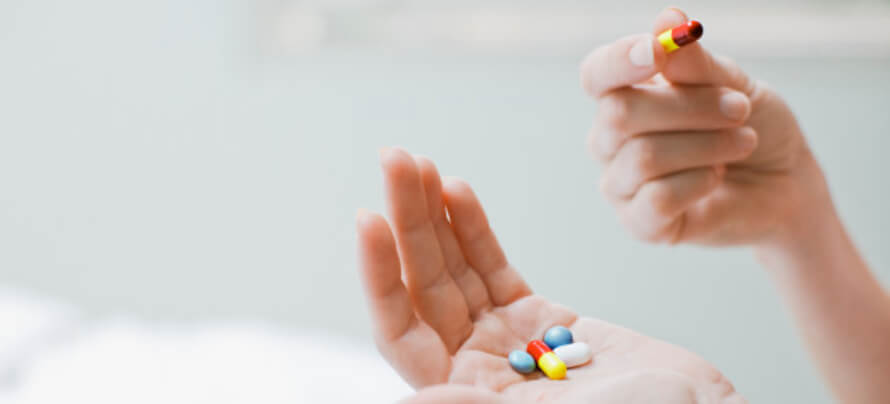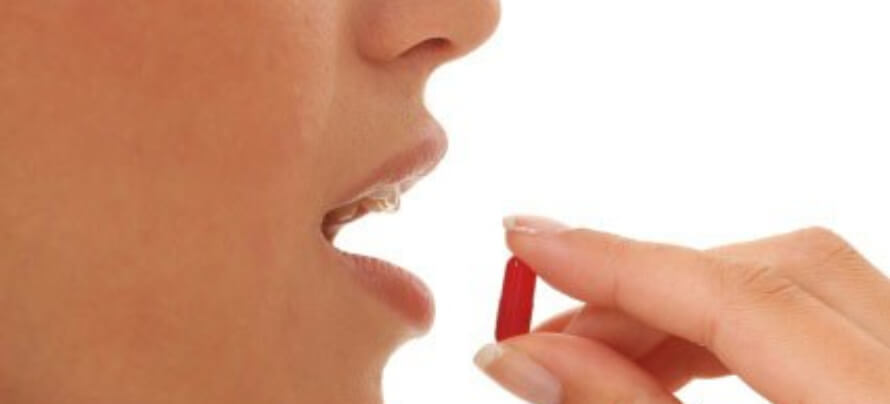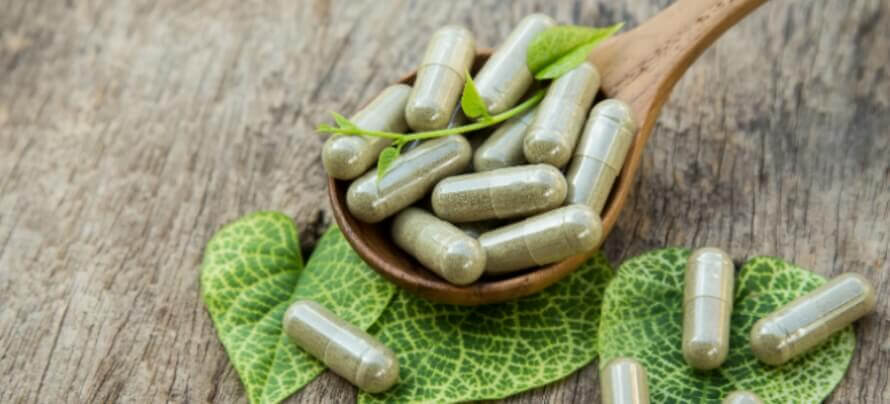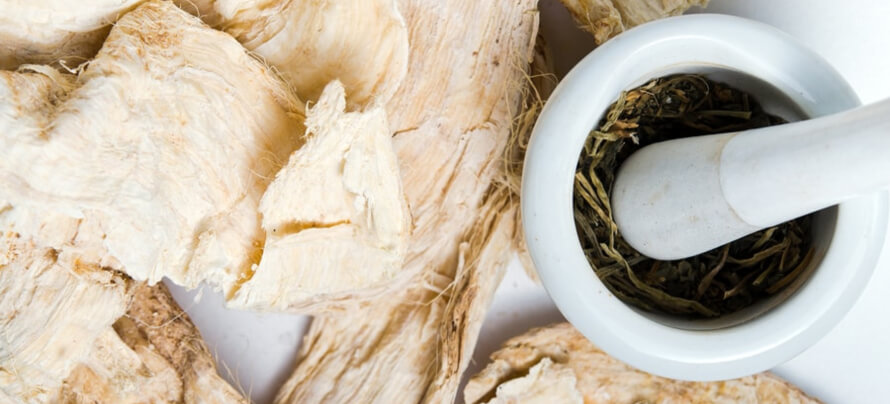Key Takeaways
- Supplements can be as powerful as drugs at times, and this strength can seriously hurt you if you don’t know what you’re doing with some select supplements.
- Many supplements have “side-effects” that are surprisingly minor, like simply having diarrhea, but assuming that these low scale side-effects apply to all supplements just means you get blindsided when something destroys your immune system.
- Devil’s Pepper, White Kwao Krua, and Thunder God Vine are three supplements that exemplify the above; their potency is met with powerful side-effects that are more harmful than good.
I just want to get this off my chest …
If you all have family members who want to literally throw money away, perhaps throw it in my direction? I mean, it’s free money after all.
That doesn’t make sense? Why would I mention freebies?
My apologies, I just figured when people bought the latest detox diet, latest fake doctor supplement hype, or the other random stuff on the shelves with no prior research that they were trying to literally throw their money away.
Cause ultimately I figured that if you were buying something you want it to actually work.
You’ve probably seen us harp on about using “clinical doses” of various ingredients here at Legion and, no lie, some people believe it’s all marketing hype.
What does that even mean, anyway?
Well, a clinically effective dosage is the amount of a substance that’s been proven to work in well-designed, well-executed, and peer-reviewed research, and it’s the only way to know for sure that you’re taking enough of something to get the desired results.
The reason we talk about this so much is because we need to if we want our products to work.
Dosage is everything.
Dosage determines strength, dosage determines effects. Proprietary blends are a sin upon this cursed earth and should be destroyed immediately. That sort of thing.
And I have to admit that I’ve talked about this quite a bit in the past. Really, to the point where it’s almost beating a dead horse.
So I’d like to deviate from that script for a bit.
Not going to deviate from the “dosage” script—no—that’s an outright law of pharmacy that needs to be obeyed. Moreso I’m going to talk more about how just because something works … doesn’t mean that it’s good for you.
I mean, with hundreds of supplemental options out there there has to be some that outright kill you, right?
There are. They are powerful, they are potent, and by god never put these in your mouth.
To put it simply, this article is a toxicology lesson about how the saying “the dose makes the poison” sometimes literally refers to poisons and they may very well be sold to you.
Let’s start by talking about potency.
- What Is Potency?
- Why Do We Care about Potency?
- The Top 3 Supplements That Can Actually Kill You
- The Bottom Line on the Most Dangerous Supplements
Table of Contents
+What Is Potency?

Potency of a drug simply refers to a way of discussing its overall strength.
It’s a measure of how effective something is compared against the dose taken. Potent drugs are strong and they tend to be strong at relatively low doses or concentrations.
For example, something that’s able to block half of a receptor at a concentration of 1 uM (read as “micromole” or micromolar concentration) is 1000-fold less potent than something that blocks half of the same receptor at 1 nM (read as nanomolar)—regardless of the fact that ultimately they are both doing the exact same thing.
That’s the technical term, at least.
When it comes to the usage of supplements sometimes strength and potency are used interchangeably. They both refer to stuff that “works” and works both fast and well.
For the purpose of this article we’ll be using the colloquial definition of “potency” when it comes to supplements which simply refers to the strength of a supplement.
Why Do We Care about Potency?
The dose makes the poison.
That’s it in a nutshell.
When it comes to the harder sciences, like physics or mathematics, there are numerous absolute “rules” that have to be followed. When it comes to softer sciences, like social and political sciences, there are no absolute rules and everything is a grey area.
Pharmaceutical sciences is very much in the middle area.
Technically it’s a hard science but due to major lapses in understanding, particularly when it comes to lifestyle and genetic shenanigans, that prevent us from fully predicting what will happen.
And what is a science if not an attempt to predict and utilize the future?
Ultimately, pharmacy has very few absolute black and white rules in it as almost everything is subject to the, “Well, maybe not in this case…” clause. However, “The dose makes the poison” is the defining rule of toxicology and an example of one of these absolute rules.
If you want something to DO something in your body, it has to interact with your body. What it does, and how well, is directly related to HOW MUCH of that thing is in your body.
Which is why homeopathy is the stupidest thing ever and I take pot shots at it all the time.
Black and white rules are hard to come by so, when we get one with absolutely no grey area, it should be respected and not outright reversed you damn homeopaths.
There are no exceptions to the rule of dosage. The only stuff that circumvents it, stuff like the placebo effect (a.k.a. the only thing homeopathy has going for it), are actually parallel phenomena (two events that occur simultaneously, rather than an “A or B but not both” situation) rather than stuff that disobeys this rule.
Why am I harping on so much about obvious stuff like this?
Well, let’s return to the basic premise of potency: strength combined with concentration. If two things do the same thing, but one requires a lower dosage, it’s more potent.
When you have the Western medicine combination of a drug synthesized in a lab, tested for dose and purity, and the standardized dose administered by a trained doctor then we can wrangle the bull of potency like a matador.
When it’s grown in the ground from indeterminate soil quality and we plop it in our own mouths, however, our bodies become the china shop for this bull.
In other words, one batch will almost always differ from the previous batch if the “batch” is just a plant. If things in it are potent it’s very easy to accidentally be “too much” at the fault of no one.
There are a few herbs out there that, thankfully, are not usually sold as dietary supplements anymore. You might still be able to find them in sketchy mom & pop stores here and there however, and they should be avoided at all costs.
I want to bring up 3 herbs as case studies of what can happen when potency is not standardized and regulated, and this involves talking about some plants with kill counts.
Recommended Reading:
The Top 3 Supplements That Can Actually Kill You

All of the following plants have been used to heal and help people.
Obviously there are numerous toxins out there but we’re not trying to use hemlock to cure Athens of political dissent, we’re trying to cure sickness.
Just to reiterate, the following are brought up for the purpose of interest and a cool blog topic.
These are not recommendations and should not be interpreted as such even when I talk about how they “could” or “have been” used with success.
With that out of the way, let’s move on to the most boring of the 3 that is merely chock full of potent antipsychotics.
Dangerous Supplement #1
Rauwolfia Vomitoria
You know a plant is great when it is named after making people profusely vomit.
I might be wrong on that interpretation of vomitoria but, honestly, I prefer this interpretation and don’t want to be corrected.
Rauwolfia vomitoria is better known by the common name of Devil’s Pepper, which with some marijuana (the devil’s lettuce) is the start of making the most sacrilicious burger.
Just get some buns made from wheat gluten (Seitan), some meat straight from Ouroboros, and fellow Monster Hunter fans can add a Deviljho for the demonic pickle and we can have one hellish barbeque.
My jokes are apocalyptic, I know.
Jokes aside, the Devil’s Pepper is full of antipsychotics, stimulants, other neuroactive agents, and is a great case study of dirty drugs in herbal supplements.
“Dirty drugs” or dirtiness is a pharmaceutical term used to refer to how promiscuous a molecule is when it’s in the body.
Generally speaking when we ingest a molecule to do task A we want it to do task A and nothing else. If successful this is a very “clean” drug.
If it happens to start fondling a dozen or so receptors all over the body then it’s dirty.
While dirty drugs are not inherently bad (green tea catechins are pretty dirty in this sense) when it’s paired with overall potency it just leads to unpredictable effects. It basically means a drug ends up having negative drug-drug interactions with itself.
If we’re told to avoid taking vitamin K with warfarin, we can do that. If we’re told to avoid taking vitamin K with vitamin K then… how does that make sense? It doesn’t.
Devil’s Peppers don’t make sense from a safety perspective.
The devil’s pepper contains an alkaloid that you’re all familiar with, yohimbine, but also it’s more uncontrolled relatives like reserpine (an antipsychotic), ajmalicine (that has a history of pharmaceutical use) and alstonine amongst about 20 other related molecules.
Given how it contains sedatives, stimulants, antipsychotics, anxiety promoters, and how it’s a damn plant that can grow however much of any of these as it wants (pretty much the opposite of laboratory standardization), it’s just a cocktail of bad decisions waiting to happen.
It’s also a good lessen that, sometimes, herbal “medicines” for psychosis that arise from word of mouth and history are sometimes just potent plants that make the town schizophrenic act differently.
Alcohol has had a history of medicinal use cause it made people shut up after all.
Remember that, back then, this stuff wasn’t called “psychosis and schizophrenia.” It was called “Steve is smelling colors and is talking about the dragon again” and was treated with “well, fuck Steve and give him his shut-up plant.”
Now, just to be clear I don’t want to slander any of the individual molecules in this plant.
Any one of these individual molecules gets a chance to be isolated, tested, and get a chance based on its own merit (ajmalicine seemed to be good enough to be pharma after all) but taking this plant intact will either be taking too low a dose of anything or just playing Russian roulette with potency.
And similar to Russian roulette, it’s all fun and games until you lose. Don’t let the bullet decide.
Recommended Reading:
Dangerous Supplement #2
Tripterygium Wilfordii

If Satan is a lesson in the dirtiness of a drug, Thor is a lesson in the therapeutic index.
The therapeutic index (henceforth TI) refers to the difference between the dose that has the desired effect in your body and the dose that’s known to cause harm in your body. For safety reasons we want this number to be as high as possible.
Of course, TI values alone aren’t enough context to label a drug good or bad.
A very small TI value of 2 (the toxic dose being twice the ideal dose) can be managed if the ideal dose is 5 grams, since it’s hard to accidentally take 5 additional grams of something.
So, many times the “toxic” effect is not that big of a deal.
Creatine, for example, could be argued to have a TI of around 3 which sounds bad until you realize I’m just saying that while 5 grams works, taking 15 grams at once can upset your stomach and give you minor diarrhea.
In the grand scheme of drug safety a bit of diarrhea is a pretty minor side-effect.
However, the “perfect storm” of badness here would be:
- A very low TI value.
- A very low overall dose making the difference between the toxic and ideal dose invisible to the naked eye.
- A side-effect of severe magnitude.
A low safety buffer, easy to accidentally overdose, and concerning reasons not to overdose are what make drugs accidentally kill people despite all other intentions.
Even if, technically, Western medicine could manage something like this it’s still susceptible to the “muh genetics” monkeywrench that makes drugs do weird things unpredictably and generally makes the molecule practically more dangerous.
And this is what we see with celastrol, the main component of Tripterygium wilfordii, a.k.a. Thunder God Vine.
The most badass name for a plant that’s both bad and ass but neither in a good way.
To put it bluntly, Thunder God Vine is a Traditional Chinese Medicine for the treatment of rheumatism— joint pain and dysfunction that comes from your own immune system targeting your own tissue. It is very effective at preventing your immune system from hurting you.
Celastrol, on a good day, has an amazing safety buffer in that it’s TI is somewhere between 1.4 and 3.6 depending on the immune cell in question and the effective concentration is basically 1 uM (1 micromole.)
To put the concentration into perspective, 1 uM is the lowest you can get for a micromole. Anything below that is nanomolar and, when a supplement works in the nanomolar range, it’s quite reasonable to assume that about 100 mg of it in your face will affect all parts of your body even with poor absorption rates; curcumin is nanomolar on reducing inflammation.
The good side of celastrol?
If you get the dose right you reduce inflammation.
The downside?
It just kind of kills half the cells outright. By accidentally increasing the concentration by 40% it goes from protecting macrophages to going all Thanos on them.
And remember that this is grown in a plant where the amount of bioactives can change by orders of magnitude depending on soil quality, temperature, growing length and conditions, etc.
The only reason it was historically seen as a good medicine is because, whether or not it reduces inflammation or kills the immune cells, symptoms of rheumatism are reduced.
Your immune system can’t hurt you if you don’t have an immune system after all.
You never know how much your immune system does for you until you kill it and, when it can no longer protect you, you get people taking this herb getting things such as scabies, cancer (Kaposi Sarcoma), ovarian failure, and of course numerous cases of death.
On the bright side, celastrol is so good at killing that it’s being structurally modified and investigated for treating cancer. It just needs to be made a bit safer before we can faithfully use it to kill things.
Recommended Reading:
Dangerous Supplement #3
Pueraria Mirifica

Devil’s pepper teaches us to be concerned with dirty drugs and Thunder God Vine warns us about the therapeutic index; both are examples of how, practically speaking, sometimes the stuff we put in our mouth is so unreliable that it makes us overdose or harm ourselves without intention.
This girl, however, has neither of those problems. A clean, relatively controllable, potent molecule that can have reliable effects in the body.
Pueraria mirifica is like Icarus, who flew too close to the sun after his father, Daedalus, gave him wings.
Sometimes, when we get power, we act in highly retarded ways.
Pueraria mirifica, technically Pueraria candollei var. mirifica and commonly known as White Kwao Krua, is a better estrogen than estrogen itself.
In a world where estrogen is used as birth control and to stop periods, and women want bigger titties (and some men want titties as well), it has a track record of being misused.
Seriously, y’all gonna stop mocking soy for increasing estrogen when you realize how utterly pathetic and weak it is compared to this girl; she puts the “slay” into yas queen slay.
The main component, miroestrol, is on record as being a quarter as potent as 17β-estradiol (the most estrogenic variant of “estrogen” which is actually a group of molecules like androgens).
Pueraria mirifica also contains deoxymiroestrol, another natural compound, which is 10-fold as potent as miroestrol—putting it at approximately 2.5-fold more potent than 17β-estradiol.
Going back to the soy point, at least one study has claimed that these “chromene” molecules are about 1,000 to 10,000 times more potent than the soy isoflavones genistein and daidzein.
If soy boys are level 1 mobs in the game of life then bromene queens are end-game bosses.
Scientifically speaking, primate studies have shown that 10 mg of a basic extraction (of the plant, not the isolated chromenes) has some estrogenic effects (vaginal reddening) while 100 mg of this plant over 90 days or 1,000 mg acutely is able to block estrus.
BLOCK ESTRUS
There was no period after that sentence cause it’s gone now.
This plant has also demonstrated mammogenic properties in ovariectomized rats—science speak for giving old rats titties. Nine out of ten dentists agree that science has indeed gone too far.
Now, I can’t really sum all of the preceding up in a toxicological lesson or anything.
I just find it interesting since usually dietary supplements are seen as the weak and safe alternative to pharmaceuticals but, damn, the fact that low doses of what is effectively a concentrated plant have such drastic properties is a bit scary.
Generally speaking we hear claims that to get the “benefits of creatine” you need 2 kilograms of red meat or for the benefits of L-citrulline you need the equivalent of a hot tub of watermelon.
This is basically just taking a single bite of the plant’s root losing your period because of it. That is a significantly better “demonstration of power” than enhancement of blood flow.
Ultimately, Pueraria mirifica is just so damn potent for a nutritional supplement that lacing your bro’s post-workout meal with it “as a joke” may constitute a legitimate crime.
Also, just to clarify, “Kwao Krua” is a term for 3 herbs in Thai medicine.
White Kwao Krua, this plant, is the feminine plant with a potent estrogen. Red Kwao Krua, the masculine Butea superba, seems to be your standard run-of-the-mill disappointment for testosterone boosting.
Yellow Kwao Krua, the final Krua, is probably just included for proper Feng Shui.
Recommended Reading:
The Bottom Line on the Most Dangerous Supplements
Primary effects or side-effects, benefits or harms; all actions of a drug are related to its potency.
To not be concerned with potency is to not be concerned with efficacy and, if you aren’t, then why even bother taking supplements in the first place?
You want supplements to have an effect.
Just make sure they’re the right effect and, if worst comes to worst, make sure it’s just something like a caffeine headache or a creatine tummy ache rather than death or chronic disease states.
There are thousands of things that could be argued to be “dietary supplements”, hundreds that have effects on the human body, and dozens that have potent enough effects that they should be approached from a pharmaceutical harm-reduction approach rather than a “durr, plants are natural” approach.
I normally discuss stuff potent enough to be concerned with so, out of respect for potency, I gotta take the time to mention things I feel are worth outright avoiding. Don’t want anybody getting into supplements and weightlifting because of me, see Thunder God Vine, and think it’s bad ass enough of a name for a test run after all.
If you want to learn more about the essential workout supplements you should take, and how to get the body you want without sacrificing your health, then check out these articles:
→ What Foods Are As Effective As Supplements for Improving Your Health?
→ The 3 Best and Worst Anti-Inflammatory Supplements (According to Science)










